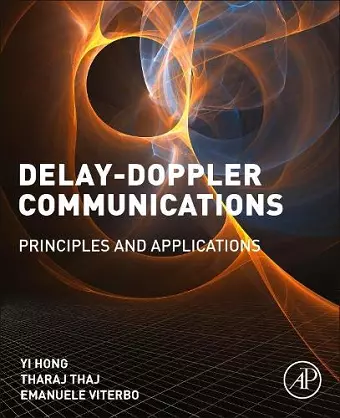Delay-Doppler Communications
Principles and Applications
Yi Hong author Tharaj Thaj author Emanuele Viterbo author
Format:Paperback
Publisher:Elsevier Science & Technology
Published:9th Mar '22
Should be back in stock very soon

Orthogonal Frequency Division Multiplexing (OFDM) has been the waveform of choice for most wireless communications systems in the past 25 years. This book addresses the “what comes next? question by presenting the recently proposed waveform known as Orthogonal Time-Frequency-Space (OTFS), which offers a better alternative for high-mobility environments. The OTFS waveform is based on the idea that the mobile wireless channels can be effectively modelled in the delay-Doppler domain. This domain provides a sparse representation closely resembling the physical geometry of the wireless channel. The key physical parameters such as relative velocity and distance of the reflectors with respect to the receiver can be considered roughly invariant in the duration of a frame up to a few milliseconds. This enables the information symbols encoded in the delay-Doppler domain to experience a flat fading channel even when they are affected by multiple Doppler shifts present in high-mobility environments. Delay-Doppler Communications: Principles and Applications covers the fundamental concepts and the underlying principles of delay-Doppler communications. Readers familiar with OFDM will be able to quickly understand the key differences in delay-Doppler domain waveforms that can overcome some of the challenges of high-mobility communications. For the broader readership with a basic knowledge of wireless communications principles, the book provides sufficient background to be self-contained. The book provides a general overview of future research directions and discusses a range of applications of delay-Doppler domain signal processing.
"The book is written in a very clear style, and allows somebody not familiar with OTFS to quickly understand the essentials of this exciting new topic. Even active researchers in the field will appreciate the clear and consistent description and the extensive intuitive explanations of the finer points of OTFS. The authors have done an excellent job in focusing on the key formulations and their interpretations, and making the book concise (some 250 pages), while also providing extensive references that enable looking up specialized developments. This valuable book will certainly benefit anyone working in the vibrant area of waveform design for 6G." --Andreas F. Molisch
ISBN: 9780323850285
Dimensions: unknown
Weight: 340g
260 pages